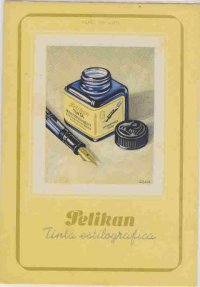 |
GLOSSARY |
Terms for fountain pen collectors
Bakelite
Often incorrect term for every plastic material. Bakelite is not used very frequently from
manufacturers for the production of fountain pens.
Celluloid
Celluloid is the name of a class of compounds created from nitrocellulose and camphor,
plus dyes and other agents. At the early pen production aera from some manufacturers gladly used
material for caps and barrels. Widely used at 1920 and also later. Easily molded and shaped in
every colour being requested. Celluloid is highly flammable and is no longer widely used.
Chrome-plated nickel steel
Chrome-plated nickel steel is a mixture of metals to consist of iron and chrome, nickel, molybdenum or manganese.
This alloy would be used from Pelikan approximately from 1940 up to 1950 instead of gold to manufacture nibs.
This nibs have also a high quality and flexibility like those from gold. User of vintage pens praise such nib as
very well pens.
Demonstrator
Writing instruments (fountain pens, ballpoints, pencils) made of transparent materials are known as
Demonstrator. Also pens or pencils that has cutouts. Primarily manufactured for dealers to demonstrate
their function.
 |
Ebonite
Ebonite or vulcanite, early naturally-derived plastic made by vulcanizing latex rubber with a
large proportion of sulphur.
look also to hard rubber.
Feed
The feed is the part on which the nib rests, and which supplies the nib with ink.
Feeds are typically made from hard rubber or plastic. Pelikan produced their feeds up to the 1950s
from hard rubber after this time from modern plastic.
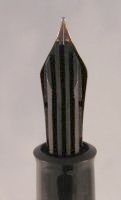 feed hardrubber |
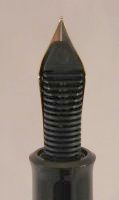 feed plastic |
Gold filled - gold plated
Gold filled is made by placing a piece of brass or other cheaper base metal and placing it between 2 pieces of gold.
The 3 pieces were then bonded together to make one piece of metal. It was then run through rollers until it was thinned
down to the desired thickness.
Plating is the general name of surface-covering techniques in which a metal is coated onto a solid surface. It is also
used for decorative purposes, typically to provide a silver or gold exterior. Electroplating is one of the plating techniques.
gold-filled: Describes a base metal part with a layer of heavy gilding fused to its surface
gold-plated: Describes a base metal part with thinner gilding, typically applied by chemical or electrical
plating with gold.
Guilloche
The guilloche is a special ornamental pattern used to decorate metal caps or also barrels
at writing instruments in assistant of guilloche machines. It is possible to produce many several
patterns, such as line pattern guilloche or wave shaped pattern guilloche.
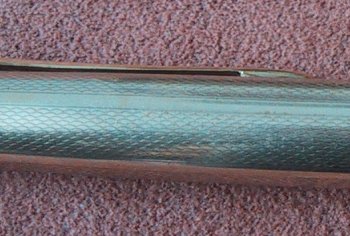 |
Hard rubber
also known as ebonite or vulcanite, early naturally-derived plastic made by vulcanizing latex rubber
with a large proportion of sulphur, the usual material for fountain pens up until the second half of the 1920,
and used for decades thereafter for feeds and sections.
Iridium
Iridium like osmium is a metal with an extrem hardness. A lot of
fountain pen manufacturers used this material for the "tip" of their
nibs. It is much more durable as gold.
Manifold nib
Manifold nibs are very rigid nibs, produced to make copies in assistant of carbon.
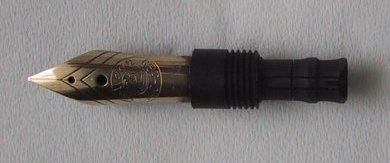 |
Maki-e
Maki-e is the art of Japanese lacquer painting and is renowned for its beauty and artistry.
The word Maki-e literally translates as �sprinkled picture� because the design is sprinkled
with gold or silver powder. For the process, the rare Japanese lacquer Urushi is used in
a multitude of layers which are polished many times. The design is drawn with colored lacquer
onto the surface. It is then sprinkled with a multitude of lacquer-layers.
 |
Music nibs
Nibs divided into three "tines" are commonly known as "music" nibs, as their broad line is suited for
writing musical scores. This nibs also have two vent holes.
 |
Nib
The nib of the fountain pen is usually made of stainless steel or gold. Gold nibs are tipped with a hard,
wear-resistant alloy that typically utilizes metals from the platinum group. Most of the common nibs end
in a round point of various sizes (fine, medium, broad). Three different lines of nibs I will show you for example.
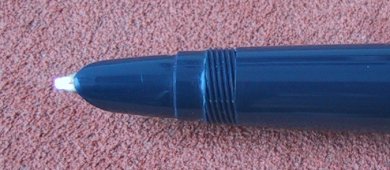 |
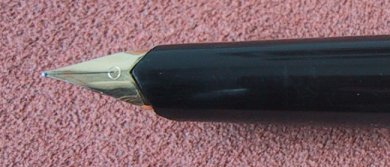 |
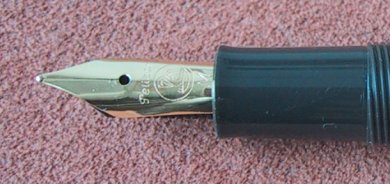 |
Nickel silver - new silver
Nickel silver is a metal alloy of copper with nickel and often but not always zinc.
It is named for its silvery appearance, and contains no elemental silver. It was used to produce for
common useful things and also for writing instruments as overlays or pencils.
Other common names for this alloy are German Silver, Paktong, New Silver, Alpacca
or Alpaca and Argentan.
Oblique
Although the most common nibs end in a round point of various sizes (fine, medium, broad),
other nib shapes are available. Examples for this are oblique and reverse oblique.
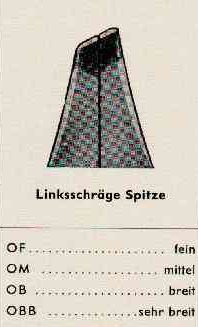 |
Osmium
look also to iridium, also a metall with an extrem hardness.
Palladium
Palladium is a noble metal with the chemical symbol "Pd". It is in a comparable
silver manner and it was used to produce nibs for fountain pens.
Raden
Raden is a traditional Japanese decorative craft used for lacquer ware and woodwork.
These sheets are cut into narrow strips and then fixed to the cap und the barrel. Used
at the Limited Edition models Kyokko and Gekko.
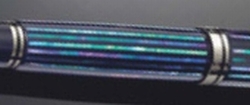 |
Rolled Gold
Like gold filled metal, but the sheets were rolled out before being bonded. This is a cheaper material
than gold filled and wears faster.
Sterling silver
Sterling silver is an alloy of silver containing 92.5% pure silver and 7.5% other metals, usually copper.
The minimum fineness is 925. More easily molded and shaped as pure silver because the copper part.
It is also more fragile than silver against dents and scratches at the surface.
Vermeil
Vermeil is the term for gold plated silver.